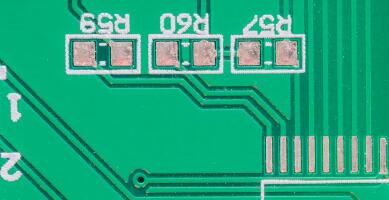A blank PCB board is a circuit board without any necessary components to make it work. Copper-plated blank circuit boards are sometimes referred to as "copper-clad" circuit boards. When the component is installed on the circuit board, due to copper coverage, the current can flow freely and effectively.

Blank PCB Board
The only characteristics of a blank printed PCB board are its main channel, pattern, copper coating, and circuit substrate. The layout of this blank circuit board is very simple. Engineers and designers can add more components. There is a blank circuit board on hand that allows customization and mass manufacturing. This is why blank PCB boards are so common.
The importance of blank PCB boards
When we make a PCB, a blank PCB board is essential. Because all circuits and wiring require an operation on a blank circuit board, manufacturers usually print a design on the blank PCB board to represent the circuit, then add components and solder circuits to make the blank PCB board work properly. It can also be seen that blank circuit boards are the foundation of all circuit boards.
When someone needs to make a PCB, a whiteboard is a crucial element. Even without a blank board, circuits and wires cannot accept or prohibit current from passing through the machine. For a blank board, users typically create a layout and add slots and devices to make it work properly.
Compared to other circuit board wiring methods, blank circuit boards require more design work. However, after assembling and manufacturing empty circuit boards, automation can often be achieved. This makes blank PCB boards the cheapest and most effective choice.
Use a blank PCB board after adding components. The blank circuit board ultimately becomes a completely blank PCB board. If matched with suitable raw materials, it will have multiple uses. Therefore, blank circuit boards have greater flexibility than single-sided and double-sided circuit boards, providing flexibility.
Blank PCB board material
There are many materials used to make blank PCB boards, most of which are coated with copper. Some people say that the color of the material is about quality. This statement is incorrect. The color of the material is only a personalized expression and is not related to quality.
There is a copper coating on the surface because copper is an excellent conductor and heat resistance. The superior heat resistance of copper enables blank PCB boards to work well with current during use.
How to make a blank PCB board?
The production of PCB boards involves four processes.
Line sketch - (drawn using PROTEL or other relevant LAYOUT software, then transferred to transparent paper or tracing paper)
1. Exposure - (Use a desk lamp or exposure lamp to illuminate the photosensitive circuit board, and print the line draft on the photosensitive circuit board)
2. Development - (After exposure, wash off the photosensitive agent with the developer and leave a draft line)
3. Etching - (wash away the unnecessary copper foil and leave the lines we need)
The purpose of blank PCB boards
As electronic devices become increasingly complex, more and more parts are needed. The circuits and components on the circuit board are becoming increasingly dense. Blank PCB boards are commonly referred to as "printed circuit boards". The substrate of the circuit board itself is made of insulating and inflexible materials.
The small circuit material visible on the surface is copper. Aluminum foil covers the entire board with the original copper foil. However, during the manufacturing process, a portion of it was etched off, and the remaining part became a small network of circuits. It is used for circuit connections of components on a PCB.
Why need to do blank PCB board testing?
There are many reasons for testing blank PCB boards. It serves as the basic framework for circuit boards. Empty circuit boards may malfunction during the installation of wires and components, causing many problems.
Although faults are not common, the blank PCB board may already have defects before adding components. The more common problems are excessive etching, insufficient etching, and holes. Even a small defect can lead to the failure of other manufacturing functions in the future. This will cause more trouble. Quality inspection is necessary. Check if it is qualified.
When using blank printed boards to make other circuit boards. With the increase in component density, the demand for multi-layer PCB boards continues to increase. Quality testing of blank printed boards has become more critical. After the completion of the multi-layer PCB assembly, it is almost impossible to repair any faults that occur. Assuming that the empty circuit board has malfunctioned from the beginning. In this way, when manufacturing other circuit boards in the future, it is equivalent to wasting time and manufacturing costs.
The Benefits of Blank PCB Board Testing
After the blank PCB board is completed, there are many benefits to testing it promptly. And after the production of the empty circuit board is completed, do not forget to check for faults. This step can avoid many problems during the manufacturing process. A small amount of initial investment can save a lot of maintenance and replacement costs.
Meanwhile, blank PCB board testing helps to detect problems early in the manufacturing process. Discovering a problem means finding the root cause of the problem and fundamentally solving it. If problems are found in the subsequent process. Finding the root cause is not easy. Once the components are covered on the PCB board, it is impossible to determine what caused the problem. Early testing can help eliminate the root cause.
Testing also simplifies the entire process. If problems are discovered and resolved during the prototype development phase, subsequent production stages can proceed without hindrance.
Blank PCB boards only have primary channels, patterns, copper coatings, and circuit substrates. The design of an empty circuit board is very simple. Engineers and designers can freely add components as needed. This blank PCB board provides flexibility, making mass production possible. So blank PCB boards are very popular in our daily lives.